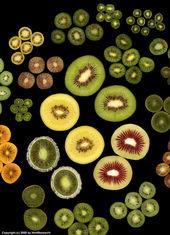

Scientists at New Zealand’s HortResearch have discovered the DNA that controls the colour, shape, flavour, nutrition and ripening of kiwifruit.
The crucial genetic data is being released this week and will enable breeders to develop new varieties that have increased health benefits and exciting new flavours, without recourse to genetic modification.
HortResearch and listed New Zealand biotech company Genesis Research & Development Corporation Ltd announced on Tuesday that they would complete the public release of the world’s most extensive collection of kiwifruit DNA sequences.
The release comprises more than 130,000 kiwifruit gene sequences - referred to by scientists as expressed sequence tags (ESTs). These are DNA sequences from active genes in the plant that govern flavour, colour, shape, vitamin content and aspects of fruit development such as ripening and storage life.
HortResearch scientist Dr William Laing said the kiwifruit ESTs were identified over an eight-year period and will be used by the company’s breeders to speed up development of new kiwifruit varieties through a technique known as Marker Assisted Selection (MAS).
Laing said: “Our breeding programme with Zespri generates many thousands of seedlings every year. Without MAS, we would have to plant out each of those seedlings, wait years until they bear fruit and then assess which plants we wanted to commercialise or use for further breeding. With MAS, we can quickly scan the seedlings and find out right away which ones are likely to have the type of fruit we want.
“HortResearch has a collection of 23 species of kiwifruit and many more can be found in China. We are now better placed than ever to unlock some of that natural resource and deliver it to consumers.”
HortResearch now hopes to share the EST database with researchers worldwide, to gain even further knowledge through collaborations with them.



